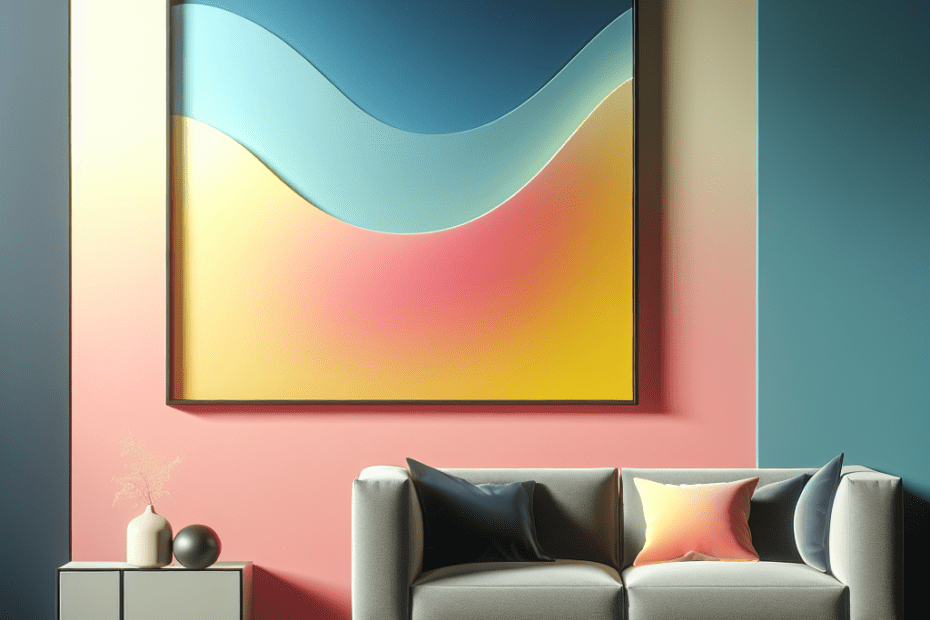Introduction to Color Gradients in Design
In the world of design, they often aim to create beautiful and visually stimulating compositions. Among the many techniques they use, color gradients have emerged as a popular choice for achieving a modern and chic look. According to a study conducted by 99designs, 57% of designers stated that gradients were making a comeback in design trends in 2023, which shows their increasing popularity. This article will explore how designers can effectively use color gradients in design to enhance their projects.
Understanding Color Gradients
Color gradients, sometimes called color transitions or fades, involve a gradual blending from one color to another. This blending can occur between different shades of the same color or between entirely different colors. There are several types of gradients including linear, radial, and conic, each offering its own unique aesthetic appeal.
Types of Color Gradients
| Gradient Type | Description |
|---|---|
| Linear Gradient | Transitions in a straight line between two or more colors. |
| Radial Gradient | Transitions in a circular pattern, radiating from a central point. |
| Conic Gradient | Rotated gradients that blend around a central point like a cone. |
How to Utilize Color Gradients Effectively
To use color gradients effectively, they must first consider the mood and message of their design. Different color combinations can evoke varying emotions. For example, a blue to purple gradient can convey calmness and serenity, while a red to orange gradient may evoke warmth and energy.
They should also take care in choosing complementary colors that blend seamlessly. Websites like Coolors and Adobe Color can help them find the perfect color pairings and combinations for their gradients.
Implementing Gradients in Modern Design
Color gradients are versatile and can be used on various design elements, from backgrounds to text. Here are some ways they can implement gradients to achieve a modern look:
- Backgrounds: Gradients can provide depth and interest to page backgrounds, making them less flat and more dynamic.
- Branding: Incorporating gradients into logos and other branding materials can help a brand stand out and appear trendy.
- Buttons and Icons: Subtle gradients can add a touch of flair to UI components like buttons and icons, improving user engagement.
The Rise of Gradient Trends
Gradients have seen a resurgence due to their ability to create futuristic and eye-catching looks. Canva reported that designs utilizing gradients received 20% more engagement compared to flat designs. This trend proves that gradients are not just a passing fad but a powerful tool in the design world.
Challenges and Considerations
Despite the beauty of gradients, they must be used thoughtfully to avoid overwhelming a design. Here are some challenges and considerations they may face:
- Avoid using too many contrasting colors in a single gradient to prevent visual clutter.
- Ensure accessibility by checking how gradients look on different devices and to users with color vision deficiencies.
- Balance the use of gradients with other design elements to maintain a cohesive overall look.
Key Takeaways
- Color gradients are a popular choice for creating modern, chic designs.
- They offer various types – linear, radial, and conic – each with unique effects.
- Effective gradient use enhances backgrounds, branding, and UI components.
- Proper color choices and tools like Coolors help in creating seamless gradients.
- Gradients are on the rise with proven higher engagement rates.
FAQ
1. What are color gradients?
Color gradients involve a gradual blending from one color to another, creating a smooth transition that can add depth and interest to designs.
2. What types of color gradients are there?
The primary types of color gradients include linear, radial, and conic, each with its own unique visual appeal.
3. Why are color gradients popular in design?
Color gradients are popular because they create an engaging, modern aesthetic, and enhance the visual appeal of design elements like backgrounds and icons.
4. How can gradients improve user engagement?
Gradients can make designs more visually appealing and vibrant, encouraging users to engage more with the content. Studies show designs with gradients have higher engagement rates.
5. What should one consider when using gradients?
They should consider color compatibility, ensuring the gradients do not overwhelm the design and maintaining accessibility for all users.
